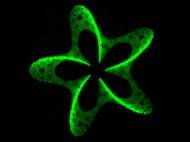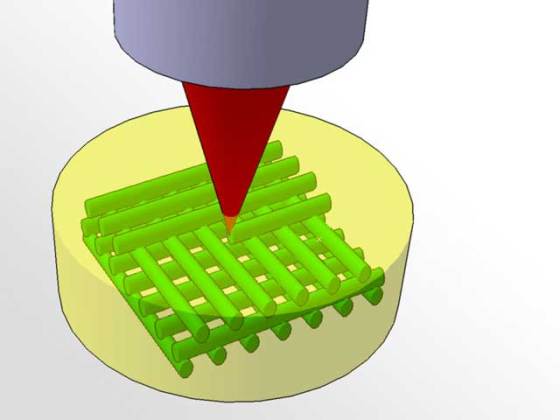Using laser beams for precise 3D printing
 Researchers at the Vienna University of Technology developed a method which employs laser beams in order to perform 3D printing able to attach molecules at a desired place. Named 3D-photografting, the method could be used to grow biological tissue or to create precisely printed micro sensors with adequate marker molecules placed at to react with substances that are being detected.
Researchers at the Vienna University of Technology developed a method which employs laser beams in order to perform 3D printing able to attach molecules at a desired place. Named 3D-photografting, the method could be used to grow biological tissue or to create precisely printed micro sensors with adequate marker molecules placed at to react with substances that are being detected.
The method is a result of close cooperation between two teams of researchers from the Vienna University of Technology – a materials science team led by Professor Jürgen Stampfl and research group for macromolecular chemistry led by Professor Robert Liska. The process starts with a hydrogel – a material made of macromolecules, arranged in a loose meshwork. The material has pores large enough to allow other molecules or even cells to migrate through the material.
“Putting together a material from tiny building blocks with different chemical properties would be extremely complicated. That is why we start from a three dimensional scaffold and then attach the desired molecules at exactly the right positions”, said Aleksandr Ovsianikov, lead author of the study from the university’s Institute of Materials Science and Technology. “Much like an artist, placing colors at certain points of the canvas, we can place molecules in the hydrogel – but in three dimensions and with high precision.”
Selected molecules are introduced into the hydrogel meshwork, and certain points of the material are focused by the laser beam. The most irradiated areas of the material lose their photochemically labile bond, thus creating highly reactive intermediates which locally attach to the hydrogel. The researchers managed to obtain a resolution 4 µm, but a higher precision could be achieved with a better lens system of the laser.
Research groups around the world are attempting to mimic the nature in which the extracellular matrix of the tissue uses specific amino acid sequences to signal the cells about their growth. While there have been successful attempts to perform this tasks in two dimension, the growth of larger tissues with specific inner structure has been a harder goal. The new technique developed by the researchers at the Vienna University of Technology could be for artificial growth of biological tissue, where the meshwork material serves as a scaffold at which cells could attach.
3D photografting method could be used in other fields which require high precision. Photovoltaic technologies could get closer to theoretical limitations, and sensory technologies could benefit with more reliable detection. It could also lead to novel microscopic 3D “lab on a chip”, where accurately positioned molecules react with substances from the environment.
For more information, read the paper published in the Advanced Functional Materials: “3D Photografting: Selective Functionalization of 3D Matrices Via Multiphoton Grafting and Subsequent Click Chemistry”.










Leave your response!